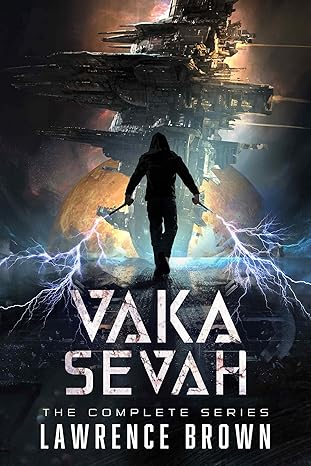
(Note: this review of the 2025 release of the 2nd edition of this work updates the review of the 2019 original version.)
A young man – a boy, really – is torn out of his world by forces he cannot understand and compelled to take on an improbable role as the only person who can save this civilization that is far beyond his understanding. The world on which David lands is familiar to those in Dune and Star Wars, in this case evenly divided between desert and ice expanses. Also familiar yet ever-jarring is the a strange melding of subsistence-level tribes and off-planet advanced aliens, medieval societies armed at the same time with swords and air-scooters, marching robot dinosaur-like combat platforms and hand-to-hand battles with monsters. There is of course the standard suicidal flight in obsolete craft dodging anti-aircraft lasers to an impossibly rock-hard target that may or may not be the real focal point.
So, yes, we’ve seen much of this before, but the sci-fi realm is so richly populated with classics that it would be hard to write such a story that didn’t have elements borrowed from another. Larry Brown’s hero David is carried along by events but, unlike Forrest Gump, who is just an innocent abroad who happens to be a bystander in key events of his time, David has a clear story arc, which is just as well since he starts out as a rougher version of Holden Caulfield from the Catcher in the Rye which many readers has as a required text in school. His evolution, however, is more evocative of a character much more familiar to UK readers: Tom Brown’s Schooldays.
(For US readers not familiar with this tale, George McDonald Frazier produced the monumental Flashman Papers series, which offers often hilarious but extremely well-documented readings about the great doings of the British Empire and other key world events from about 1830 to 1890. The whole thing is a spoof follow-on to the original book and focuses on the anti-hero, Harry Flashman, ringleader of the school bullies. Beneath the vicious exterior, Flashman is no more than a fraud and coward, but his poltroonery causes him to be the sole survivor in one glorious disaster after another, which convey on him the illusion of continued heroic survival against impossible odds. As a result, he is deemed impossibly brave and is carried to higher and higher esteem in his society.)
Thus it is with David, who is consistent only in his attempts to avoid facing up to the challenges, which are admittedly daunting given that he has none of the required experience, talents or interest. As he stumbles from one evasion of duty to another, failure and defeat are snatched away and replaced with victories, sometimes by accident, sometimes by the intervention of others who are more clued into what is really going on. Eventually, of course, we reach the point at which evasion is no longer possible. Has he grown in character, skill and wisdom to the point that the nemesis can be defeated, or will he collapse in a puddle and let the bad guys win?
The fact that one can still ask this question tells you that Larry Brown has put enough wrinkles in his first book that the story does not simply plod on to the perfect endings of Dune or Star Wars. It leaves you the chance to do what all good thrillers do: make you stay up later than you had intended so you can finish the story and find out what happened. Bravo, Larry!
Having reviewed both the original edition and this revised edition [for which purpose I did receive complimentary copies], in this latest version the dialog is crisper and David is more believable. The author has also done a great job of avoiding the common flaw of the galactic coincidence in which everyone speaks English, and part of the interest is in the bi-directional learning process that must occur.
You can get it on Amazon at https://www.amazon.com/dp/B0DTH5FNBM
